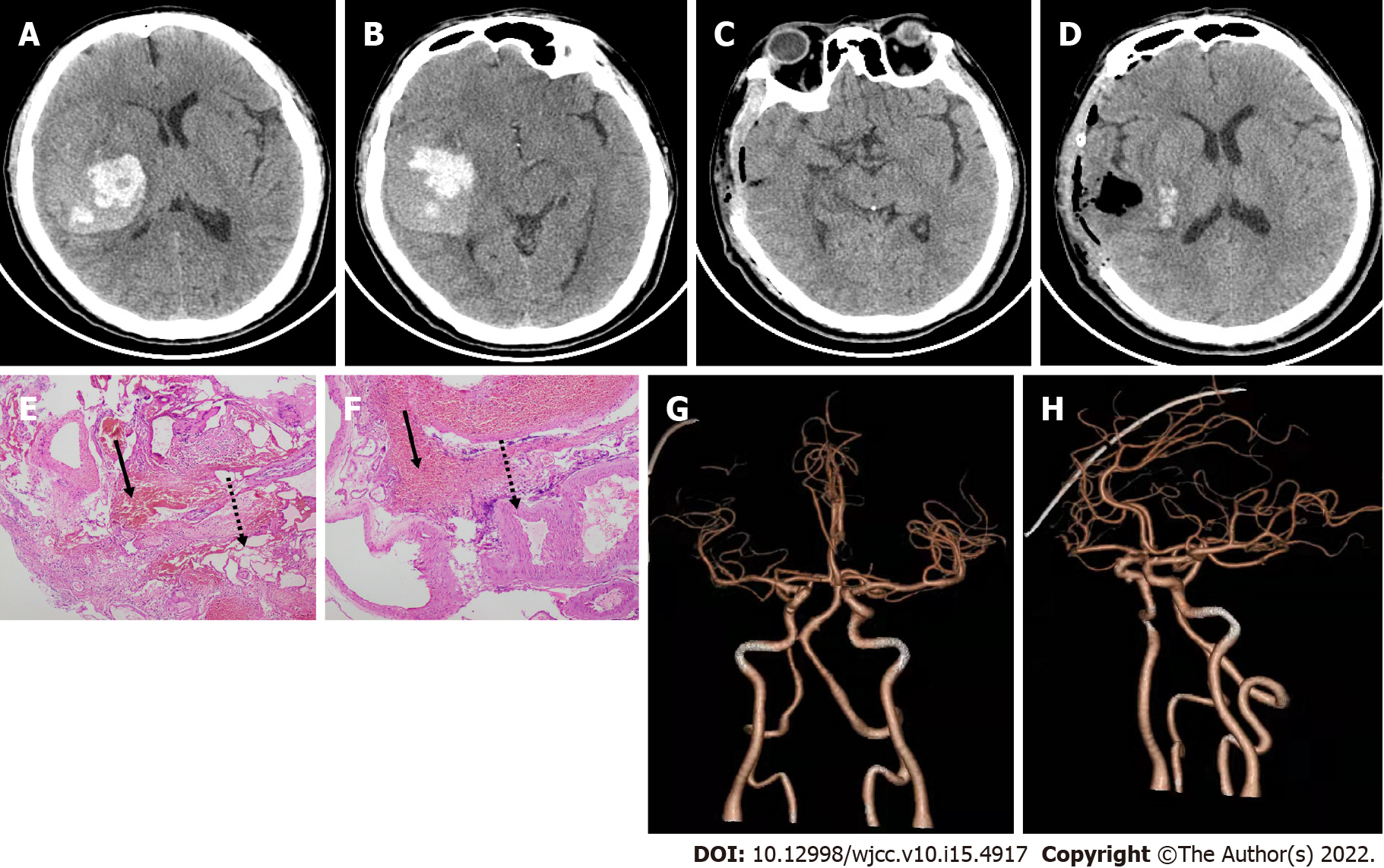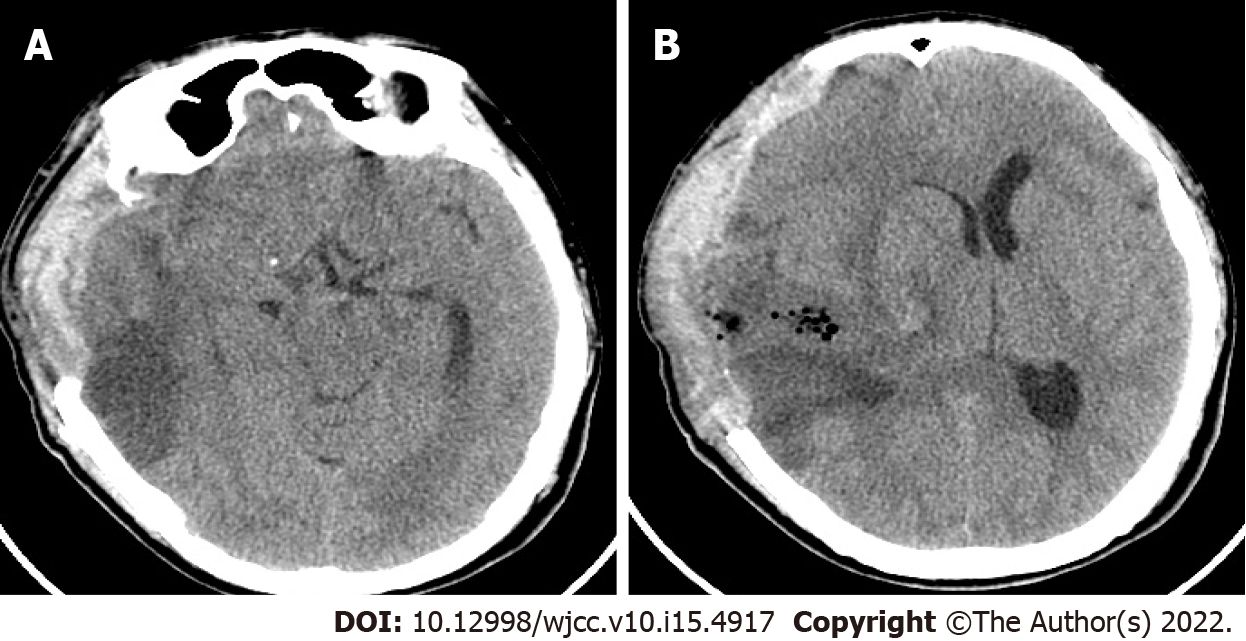Copyright
©The Author(s) 2022.
World J Clin Cases. May 26, 2022; 10(15): 4917-4922
Published online May 26, 2022. doi: 10.12998/wjcc.v10.i15.4917
Published online May 26, 2022. doi: 10.12998/wjcc.v10.i15.4917
Figure 1 Axial computed tomography scans, postoperative computed tomography angiography and histopathology.
A and B: Tight temporal hemorrhage on the day of admission; C and D: Hematoma is completely cleared on the 1st d after the operation; E and F: Histopathology (E and F, hematoxylin and eosin stain), original × 40 magnification. Dashed arrows indicate vascular malformations with an uneven thickness of the blood vessel wall and varying size of the blood vessel cavity. Solid arrows indicate many red cells in the blood; G and H: Computed tomography angiography showing normal cerebrovascular after the operation.
Figure 2 Axial computed tomography images.
A and B: Transtentorial herniation on the 7th d after the operation.
Figure 3 Axial computed tomography images.
A and B: Resolution of transtentorial herniation the day after transtentorial herniation; C and D: Hematoma and edema are completely absorbed 2 wk after the operation.
- Citation: Du C, Tang HJ, Fan SM. Paradoxical herniation after decompressive craniectomy provoked by mannitol: A case report. World J Clin Cases 2022; 10(15): 4917-4922
- URL: https://www.wjgnet.com/2307-8960/full/v10/i15/4917.htm
- DOI: https://dx.doi.org/10.12998/wjcc.v10.i15.4917











